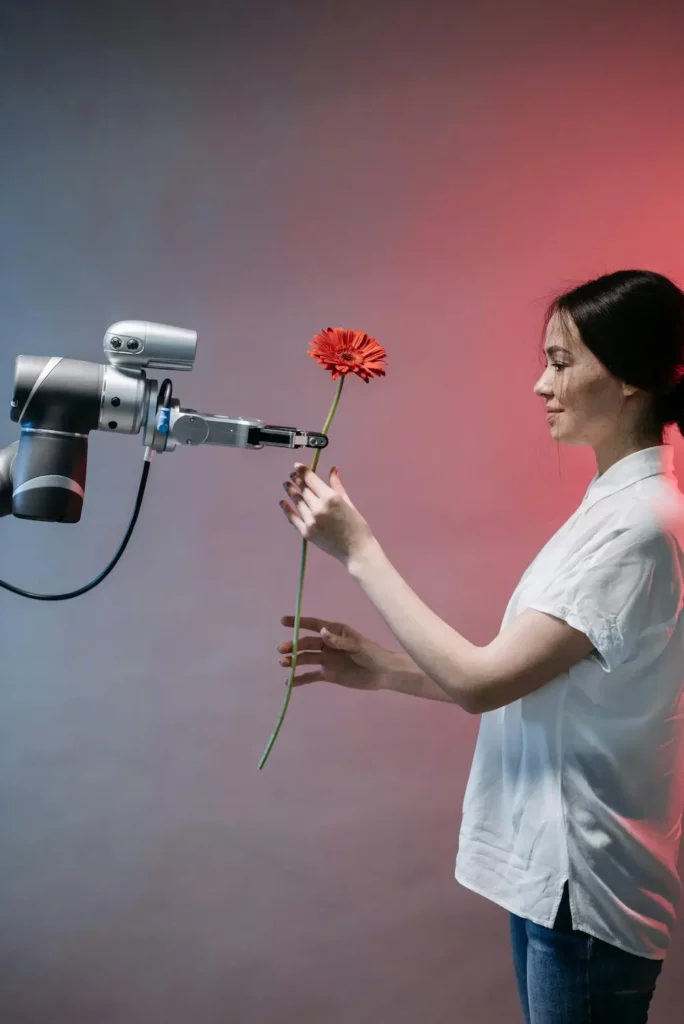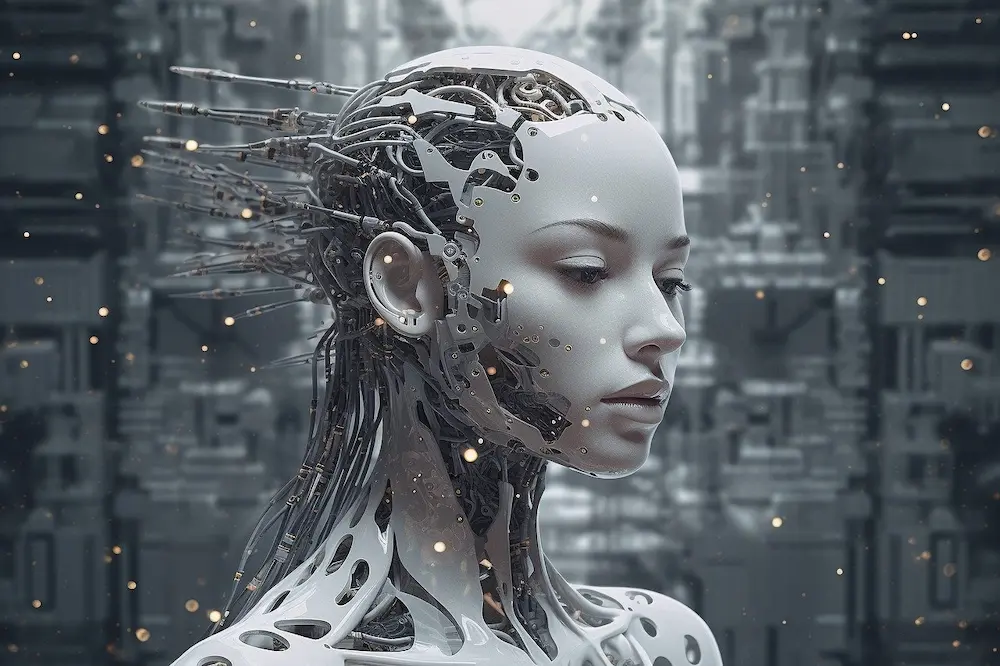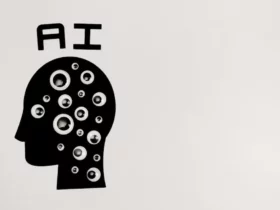Artificial Intelligence (AI) has evolved from a mere concept in science fiction to a groundbreaking reality that permeates various aspects of our daily lives. The journey of AI spans decades, witnessing remarkable progress from the imaginative realms of literature and film to tangible technological advancements that shape the present and future. This brief history provides a glimpse into the transformative trajectory of AI, exploring its origins, breakthroughs, and ongoing integration into our societies.
A Visionary Concept Takes Root
The roots of artificial intelligence can be traced back to the mid-20th century, with the pioneering work of mathematician and computer scientist Alan Turing. In his seminal paper “Computing Machinery and Intelligence” (1950), Turing posed the question, “Can machines think?” This inquiry laid the conceptual foundation for AI and ignited the spark of curiosity that would lead to the birth of this revolutionary field. The subsequent decades saw the emergence of early AI models and the development of symbolic reasoning systems, laying the groundwork for future explorations.
Fast forward to the 1956 Dartmouth Conference, where the term “artificial intelligence” was coined, marking the formal inception of the field. The 1960s and 1970s witnessed ambitious projects like the General Problem Solver (GPS) and the development of expert systems, which aimed to mimic human problem-solving and decision-making processes. Although these early endeavors faced challenges, they set the stage for the technological leaps that would follow, eventually transforming AI from a conceptual dream into a tangible reality.
Challenges and Resilience
As the initial excitement around AI reached its peak, the field encountered setbacks, leading to what became known as the “AI winter.” During the 1970s and 1980s, over-optimism and unrealistic expectations collided with technical limitations, resulting in a temporary decline in AI research funding and interest. Despite this challenging period, dedicated researchers persevered, laying the groundwork for a resurgence in the 1990s. The AI winter taught valuable lessons about managing expectations, fostering interdisciplinary collaboration, and emphasizing the gradual, incremental progress that would define the field’s future.
The resurgence of AI in the 1990s was marked by breakthroughs in machine learning and the advent of neural networks. The shift from rule-based systems to data-driven approaches fueled the development of more sophisticated algorithms capable of learning from vast datasets. This era saw the rise of technologies like support vector machines and the birth of the subfield known as machine learning. With increased computing power and the availability of big data, AI entered a new era, setting the stage for transformative applications in fields ranging from healthcare to finance.
Integration and Ethical Considerations
In the 21st century, artificial intelligence has become an integral part of our daily lives, influencing how we communicate, work, and even make decisions. From virtual personal assistants and recommendation systems to self-driving cars and advanced medical diagnostics, AI technologies continue to evolve at an unprecedented pace. The rise of deep learning, a subset of machine learning, has enabled remarkable achievements in image and speech recognition, natural language processing, and complex problem-solving.
However, as AI becomes more pervasive, ethical considerations come to the forefront. Issues such as bias in algorithms, privacy concerns, and the potential impact on employment raise critical questions about the responsible development and deployment of AI. Striking a balance between innovation and ethical considerations is crucial to ensure that artificial intelligence continues to benefit humanity without inadvertently causing harm. As we navigate the complex landscape of AI integration, the lessons learned from its history serve as a guide for responsible and sustainable progress.
Harmonizing Creativity and Technology
In recent years, artificial intelligence has not only proven its prowess in solving complex problems but has also ventured into the realm of creativity. One fascinating application is the ability to generate music using AI and explore innovative sonic landscapes, expanding the boundaries of musical composition. This intersection of technology and art challenges traditional notions of human creativity. AI algorithms analyze patterns, styles, and compositions from vast musical datasets, enabling the generation of original pieces that captivate listeners. This foray into the arts showcases the versatility of AI, demonstrating its capacity to push the boundaries of what was once considered uniquely human. As we witness the harmonious collaboration between technology and creativity, it becomes evident that the evolution of artificial intelligence extends beyond functional applications, embracing the diverse facets of human expression.
Revolutionizing Diagnosis and Treatment
As artificial intelligence continues its evolution, one of the most impactful domains is healthcare. AI is transforming the landscape of medical diagnosis and treatment, offering unprecedented capabilities in analyzing medical imaging, predicting disease outcomes, and personalizing treatment plans. Machine learning algorithms, fueled by vast datasets, can identify subtle patterns in medical images that may elude the human eye, leading to earlier and more accurate diagnoses. Additionally, AI-driven predictive models help healthcare professionals anticipate patient outcomes, allowing for proactive and personalized interventions. The integration of AI into healthcare not only enhances efficiency but also holds the potential to save lives through timely and precise medical interventions.

Balancing Innovation and Ethical Considerations
As we stand on the brink of a new era shaped by artificial intelligence, the road ahead is both promising and challenging. The ongoing quest for innovation must be accompanied by a steadfast commitment to ethical considerations. Striking the right balance between technological advancement and ethical responsibility is crucial to harness the full potential of AI while mitigating potential risks. Addressing issues such as bias, transparency, and accountability will be paramount to ensure that AI benefits society as a whole. The collaborative efforts of researchers, policymakers, and industry leaders will play a pivotal role in shaping a future where artificial intelligence enhances human well-being while upholding fundamental ethical principles.
In the journey from science fiction to reality, artificial intelligence has not only transformed the way we live and work but has also expanded our understanding of creativity, healthcare, and the intricate interplay between technology and ethics. As we navigate the ever-evolving landscape of AI, it is essential to embrace innovation responsibly, fostering a future where the harmonious integration of artificial intelligence into various facets of society enhances our lives while respecting ethical boundaries. The continued exploration of AI’s potential, guided by a commitment to ethical considerations, promises a future where the once-fantastical visions of science fiction become integral components of our everyday reality.









